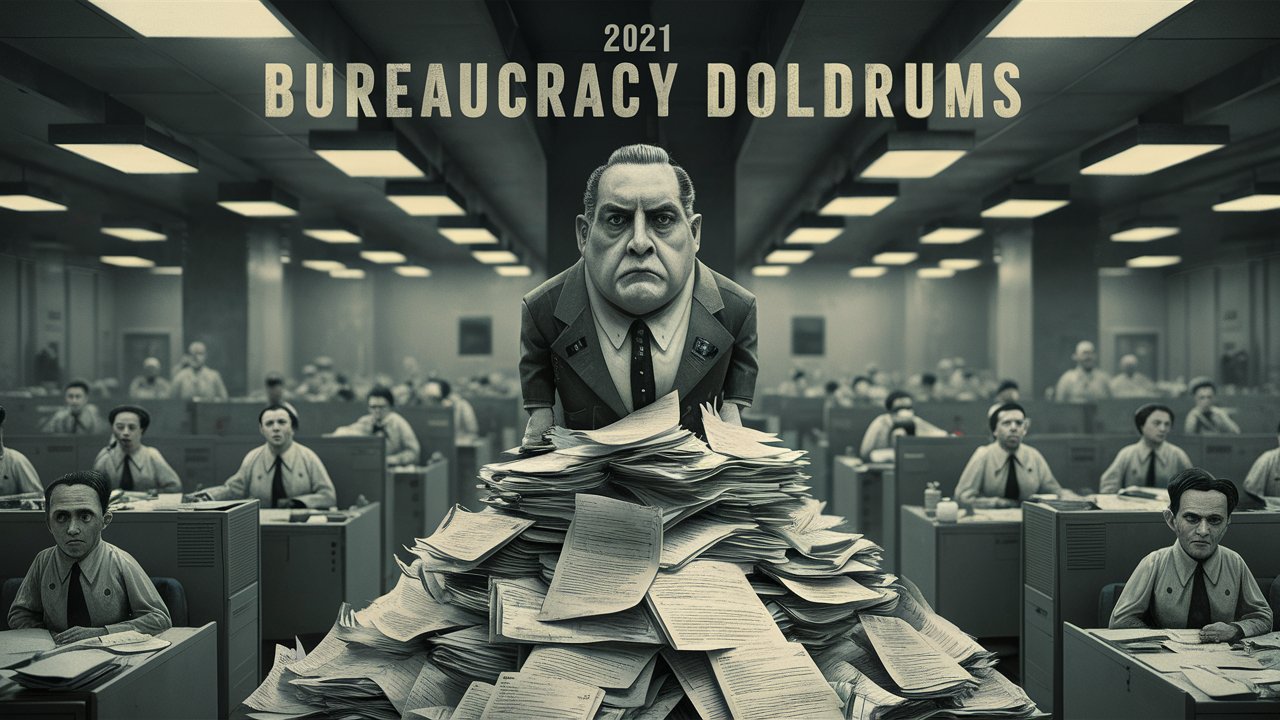6. Bureaucracy doldrums. 2021

Bureaucracy doldrums 2021
Introduction
Bureaucracy doldrums refer to a state of stagnation that occurs in bureaucratic institutions. Bureaucratic institutions are formal organizations that operate based on a set of rules and regulations. These institutions are responsible for the implementation of government policies, provision of public services, and regulation of businesses. They play an essential role in the functioning of modern societies, but they are often criticized for their slow and inefficient decision-making processes, rigid structures, and lack of innovation. The purpose of this essay is to explore the causes and consequences of bureaucracy doldrums and suggest possible solutions to address this issue.
Causes of Bureaucracy Doldrums
- Overemphasis on rules and regulations
Bureaucratic institutions operate based on a set of rules and regulations that dictate how they should function. While rules and regulations are essential to ensure consistency and fairness in decision-making processes, they can also create rigid structures that stifle innovation and creativity. Bureaucratic institutions often prioritize following the rules over finding innovative solutions to problems. This overemphasis on rules and regulations can lead to a lack of flexibility and responsiveness, which can contribute to bureaucracy doldrums.
- Lack of accountability
Bureaucratic institutions are often criticized for their lack of accountability. Decision-making processes can be slow and opaque, making it difficult to hold individuals or departments responsible for their actions. In addition, bureaucratic institutions may be shielded from external scrutiny by their legal status, making it difficult to hold them accountable for their performance. This lack of accountability can lead to a lack of motivation and innovation, which can contribute to bureaucracy doldrums.
- Resistance to change
Bureaucratic institutions are often resistant to change, as changes can disrupt the established order and challenge the authority of those in power. This resistance to change can lead to a lack of innovation and creativity, which can contribute to bureaucracy doldrums. In addition, the hierarchical nature of bureaucratic institutions can create a culture where new ideas are dismissed, and individuals who challenge the status quo are discouraged.
- Budget constraints
Bureaucratic institutions are often subject to budget constraints, which can limit their ability to invest in new technologies and training programs. This lack of investment can lead to a lack of innovation and creativity, which can contribute to bureaucracy doldrums. In addition, budget constraints can lead to a lack of resources, which can contribute to delays in decision-making processes and a lack of responsiveness to the needs of citizens.
Consequences of Bureaucracy Doldrums
- Slow decision-making processes
Bureaucracy doldrums can lead to slow decision-making processes, as bureaucratic institutions may be reluctant to take risks and try new approaches. This slow decision-making process can lead to delays in the provision of public services and the implementation of government policies, which can have negative consequences for citizens.
- Lack of innovation and creativity
Bureaucracy doldrums can lead to a lack of innovation and creativity, as bureaucratic institutions may be resistant to change and new ideas. This lack of innovation and creativity can contribute to a lack of responsiveness to the needs of citizens and a lack of effectiveness in the provision of public services.
- Low morale
Bureaucracy doldrums can lead to low morale among employees, as they may feel frustrated by the slow decision-making processes and lack of responsiveness of their institution. This low morale can lead to a lack of motivation and productivity, which can further contribute to bureaucracy doldrums.
- Negative impact on economic growth
Bureaucracy doldrums can have a negative impact on economic growth, as slow decision-making processes and lack of responsiveness can deter.
Conclusion:
In conclusion, the challenges posed by bureaucracy doldrums in 2021 highlight the need for systematic reforms and innovative solutions. Addressing bureaucratic inefficiencies requires a multi-faceted approach that includes streamlining processes, leveraging technology for automation, promoting transparency and accountability, and fostering a culture of adaptability and continuous improvement. By overcoming the bureaucratic doldrums, organizations and governments can enhance efficiency, responsiveness, and effectiveness in serving the needs of individuals and society as a whole.
Visit: http://scholarshipcorner.com